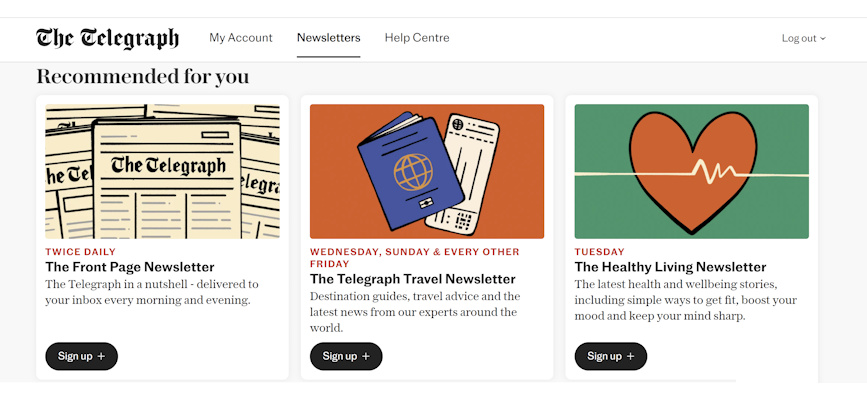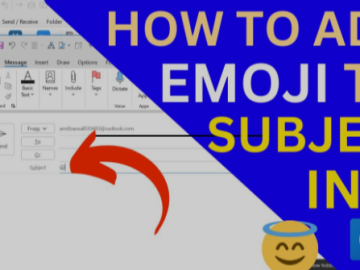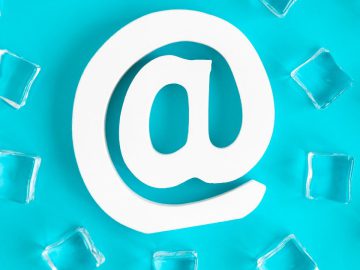Despite the challenges thrown at publishers by obfuscating metrics or deliverability changes, newsletters continue to grow in importance. Media companies increasingly use email newsletters as a key tool for maintaining relationships with audiences away from social media, finding new readers, building habits, and opening new revenue streams.
At The Publisher Newsletter Summit, publishers came together to share strategies, advice and case studies on everything from newsletter monetization to audience growth.
Here are some of the strategies that they shared:
1. Don’t be afraid to center personalities
The role of journalists with followings has grown more complicated than ever in recent years. One theme that emerged at the Summit from a number of the sessions was that – if managed right – individual members of your team can serve as an incredible audience-building tool.
Women’s membership and community publisher Black Ballad started a newsletter from founder Tobi Oredein as a way to create a bond with the reader, because people build connections with humans, not brands. “Social media is very noisy,” Oredein outlined. Given that Black Ballad has paywall, she finds that “there is a barrier with people who can’t afford a membership. The newsletter is free, so everyone that’s signed up with their email gets that newsletter every week. So it’s a way to create that personal relationship.”
Leaning into this has also opened up revenue opportunities, although Oredein said that she chooses partner organizations very carefully. A recent campaign with the Founder’s Letter newsletter saw Black Ballad work with Maltesers around maternal mental health as Oredein was about to give birth to her second child.
“I wrote this newsletter on letting go of the Superwoman complex as a mum, second time around,” she explained. “It all came together and the newsletter opened the partnership; we had an editorial video that went alongside the essay, and it just went nuts. People loved the partnership. We realized that my personal newsletter opens up partnerships. Now the newsletter stands alone as the most requested advertising channel and is the most popular source of revenue for Black Ballad.”
There are risks with building newsletter audiences around individual journalists, but these can be managed. It’s an issue UK news brand The Telegraph faced when a big-name writer for their political newsletter left, and the team had to decide what to do next.
“We’ve grown [the newsletter] substantially since then,” Head of Newsletters Maire Bonheim said, explaining that they gave another political journalist a chance to fully front the newsletter. “He’s in your inbox at exactly 1pm every day. He’s really passionate about it, and he gives it his own edge. People have built up a habit and a relationship with him.”
2. Prioritize newsletters for retention and conversion
Special interest publisher Immediate Media monetizes many of its brands like Good Food and Gardeners’ World through subscriptions. Head of CRM and Customer Retention Matt Nash sees newsletters as playing a vital role in their subscription strategy, especially for long-term relationships.

“One of the big reasons why we’re so focused on newsletters from a subscription capacity is that 25% of our app subscribers received or read a newsletter before going on to subscribe,” he said. “So on average, there’s about 18 months between someone registering on Good Food and then converting to an app subscriber.”
“We also find that conversion from trials – mainly we run free trials going into paid subscriptions on the app – is around 10 percentage points higher for people that have previously been on our newsletter base before converting to a subscription.”
Nash shared that they have a two-part email strategy for pre- and post-subscription. The first half is focused around getting eyes on the website, showcasing the product and the subscription offers. “Every newsletter we send is an opportunity for us to try and convert someone if they look like they’re likely to subscribe,” he explained.
Once someone has converted, the focus switches to the “core readership phase,” where newsletters are part of a multi-channel tech stack optimized to try and get existing users to continue their subscription. The publisher uses a range of personalization options, from content type to send frequency and time to hit the readers at just the right frequency for them.
3. Consider repackaging content for educational courses
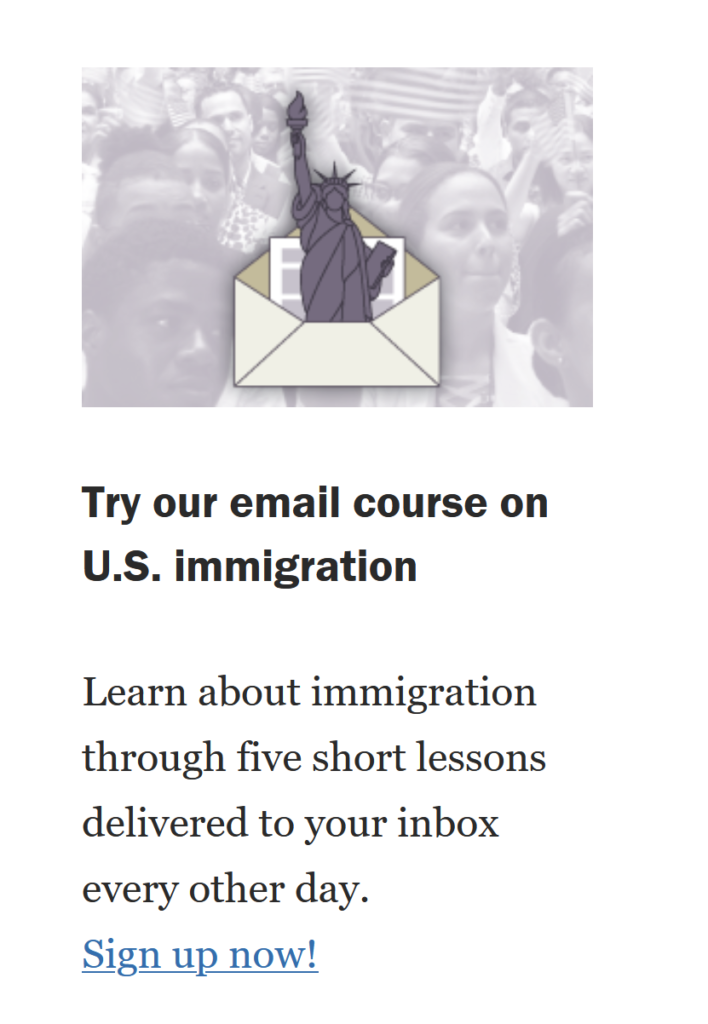
A number of publishers offer newsletter “courses” with a clear start and end point as an alternative way of engaging audiences. As part of its newsletter strategy, Pew Research Center launched an email course, which allowed them to leverage their reports and blog posts on U.S. Immigration. More recently The Guardian released a five-week email coaching plan called Reclaim Your Brain, which has attracted over 140,000 sign-ups.
Seeing examples like these, Ruth Hardy-Mullings, Head of Content at Community Care, a publication for social workers, wondered if newsletter courses could help solve some of their challenges. Their biggest driver of traffic was their weekly newsletter. She was also aware of the friction readers faced finding time to log onto the website and proactively seek out training content. A course delivered straight to their inbox would be a good way to prove value.
They launched some test courses in March 2021, delivering six emails a week over a three week period. “We took the content from longer guides and hosted it within the body of the email itself, so it solved that problem of having to go and log in on the site,” Hardy-Mullings explained. “Someone was able to open up their email, read the content and get that learning wherever they are, whether they’re in a car before they go and do a home visit, on their commute home, making use of those small amounts of time that people do have.”
Each email had a recap section at the beginning, a progress bar to keep people motivated, further reading links, and a reflective exercise at the end. Hardy-Mullings noted that signing up for a finite period of time was helpful for professionals who get thousands of emails. “The general feedback was that people really loved the convenience of the course and that format of learning, a good way that could genuinely fit into their working week,” she said.
Email courses may not suit every publisher. However, they can be a strong way of repurposing evergreen content, reducing friction points for membership organizations, or giving samples of journalism for paywalled publications, to name a few use cases.
4. Prioritize list-cleaning for a healthy newsletter strategy
One of the most revealing sessions at the Summit was Maire Bonheim and David Alexander, Head and Deputy Head of Newsletters respectively at The Telegraph. They talked about how to turn around an underperforming newsletter, and noted that they often have to use different tactics across almost 40 newsletters in their portfolio.
Alexander was keen to emphasize that although metrics have a place in your newsletter strategy, they need to be the right ones. “If you put all your effort into getting a massive list, and you trick people into signing up to your newsletter, they’ll get it. But no one will care because they didn’t mean to get it in the first place,” he explained. “You’ll have a massive list, and over time, your email provider will think it’s spam, and they’ll just put it in everybody’s junk. Pursuing vanity stats is a fool’s game. Massive lists are not the aim. You want people to read your stuff.”
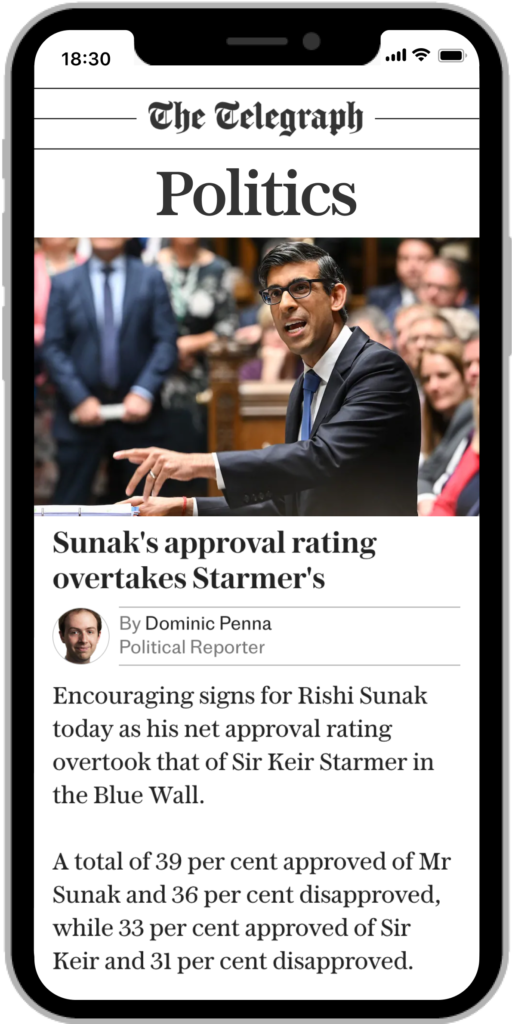
Clearing lists and pursuing slower, more genuine engagement is a braver path to take, especially with other commercial and business pressures publishers face. Bonheim said that they have different time periods for list cleaning different newsletters. “If a newsletter is a daily send, then we wait a shorter amount of time before we list cleanse, whereas if something’s weekly or even monthly, we wait longer,” she explained.
The Telegraph was also facing an issue where when some marketing emails were sent to editorial newsletter segments, readers were getting confused and newsletters were ending up in the promotions tab.
“As a whole at The Telegraph… the volume of emails had gone up hugely, and we needed to get smarter about our overall email strategy and cleverer about who we segment and target,” Bonheim said, explaining that they send warnings about removing readers from lists if they don’t ‘Click to stay’. “So to combat that, we became much more stringent with our list cleanse emails, and that seems to be having a positive impact.”
The takeaway
These strategies may not work for every publisher, and one theme which emerged strongly from the Publisher Newsletter Summit is that newsletters can be used for a wide range of different purposes. The key is to be very clear for each newsletter what its purpose is, and how that will be measured.
“[Key metrics] are so different across all our titles,” said Alexander of his work on The Telegraph’s newsletters. “I’ve worked on newsletters that have had almost 1,000 words in them, and people want to read them more than anything. I’ve also looked after newsletters where it’s all about getting people through to the site. You have to be really clear on what’s important.”
Whether it’s exploring the potential of short email ‘courses’ or letting editors take a personal lead, there are plenty of ways to freshen up a newsletter strategy. But whether this is through iterative changes, pivots or launches, keep the newsletter’s purpose front and center.

